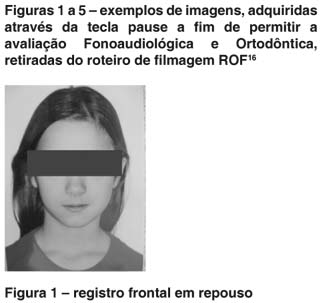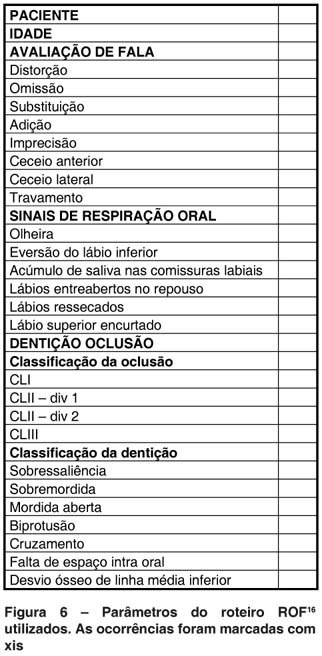PURPOSE: to check the correlations among speech disorders and mouth breathing symptoms with the type of dentition and occlusion, using video recordings. METHODS: a retrospective study with 397 patients, by studying the shooting script - ROF. Types of speech disorders and mouth breathing symptoms were assessed by Orofacial Motricity Specialist Speech and Language Pathologists and compared with the occlusal types proposed by Angle and with the dentition parameters, both evaluated by an Orthodontist. For the statistical analysis we used the program SPSS (Statistical Package for Social Sciences), version 13.0. For analyzing Spearman correlation, all assessment data were matched and analyzed. The adopted significance level was 5%. RESULTS: Considering speech disorders and dentition and occlusion data, we noted parallelism between distortion and crossbite, imprecision and bone deviation of lower midline line, locking and overjet, locking and overbite, frontal lisp and Angle Class III malocclusion, frontal lisp and malocclusion, frontal lisp and open bite, frontal lisp and crossbite; and frontal lisp and lower midline deviation. We also noted correlated opposition between locking and openbite, locking and bone deviation of lower bone midline, frontal lisp and Angle Class II-1 malocclusion, frontal lisp and overjet; and frontal lisp and overbite. Considering mouth breathing symptoms and dentition and occlusion data, we noted a symptom of parallelism between the protrusion of lower lip and overjet, accumulation of saliva on the labial commissures and crossbite, accumulation of saliva on the labial commissures and lack of intra-oral room; Half-opened lips at rest and Angle Class II-1 malocclusion. Dark eye circle and Angle Class II-1 malocclusion, protrusion of lower lip and Class II-1 malocclusion; and shortened upper lip and overbite show correlated opposition. CONCLUSIONS: the anterior lisp is correlated to dentition disorders and Angle Class III malocclusion; dark eye circle, protrusion of lower lip and half-opened lips in rest are adaptations found in Angle Class II-1 malocclusion, not characterizing oral breathing in this group; the accumulation of saliva on the labial commisures was a symptom of mouth breathing that was correlated with the disorders in dentition.
speech therapy; orthodontics; joint disorders; dental occlusion; stomatognathic system; mouth breathing








